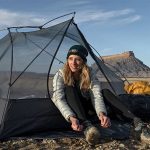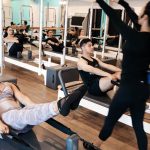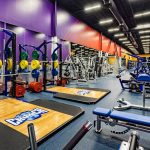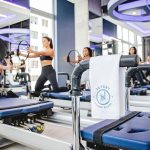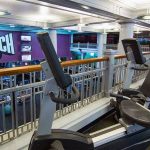After issuing warnings earlier this month that reduced the lower range of EPS guidance by two cents, excluding the anticipated 16 cents to 20 cents negative affect of recent hurricanes, the market was braced for the worse from Russell Corp. As it turned out, the company only missed their initial estimates by three cents, with the hurricanes causing less downside than management was led to believe.
Operating income for the Activewear segment decreased approximately $4 million, fueled by a 3% decline in ASP. On a YTD basis, revenues for the segment were up 5%, led the by the Artwear channel. For the third quarter, Artwear posted flat sales with volume increases offset by price decreases. International sales for the Activewear group were “up strongly.”
The Sporting Goods segment saw the acquisition of Brooks Sports push sales up to $202 million. Excluding Brooks, the segment was down 12.2% as a result of the loss of the MLB deal and the divestiture of the Discus program. The Russell Athletic group itself was “about flat.” Management sees the group as a major player in the performance product market, with the belief that “very soon” the brand will become the number three brand overall. Mossy Oak sales were also down “slightly.” Operating earnings for the segment as a whole were down $8 million for the third quarter, with Mossy Oak contributing nearly five cents per share to the loss. The Spalding group also added to the loss because of lower licensing revenues, higher marketing costs, and costs related to the shifting of Huffy backboard production to China. The company noted that, in regards to Spalding, it is currently building the line into a “premier sports mega-brand” and as such has had to drop several licenses that were not in the best strategic interests of the endeavor. So, while these dropped licenses have caused short term losses, the company sees hope in the long term, especially in new product launches and the entry of Spalding branded apparel and footwear into China. Also in Asia, Russell will begin selling direct to Sports Authority Japan, where previously the business had been handled by licensees.
Sales and operating income in Russells All Other segment were “essentially flat.”
As with seemingly every company in the U.S., the recent hurricanes that struck the Caribbean and Gulf Coast had an adverse affect on Russell. Russell, however, took a stronger stomach blow than many as the company utilizes Gulfport, Miss. as its main point of entry and export for goods sent to and received from factories in Latin and South America. Management estimates that the hurricanes had a direct impact on the company of approximately two cents per share, but cost an additional five cents through missed opportunities. Both the Activewear and the Sporting Goods segments were affected by the hurricanes, causing missed sales to total more than $10 million in the quarter.
Apart from the damage caused by hurricanes, Russell also had to fight through two different production problems during the quarter. The company found itself facing a much larger demand for hooded sweatshirts than it originally anticipated. This demand led to shifting and retraining of employees, which in turn led to higher costs of production. Russell also introduced a new product, brushed fleece, which did well as a prototype, but had “manufacturing issues” once it went into full production. The company incurred a high fallout rate for quality. As a result of these issues occurring at a period of peak demand, the company missed out on sales opportunities and was forced to play catch up in its production.
Also affecting the companys bottom line was the departure of former COO, John Letzler, which the company estimates cost six cents to the bottom line. Without all of these costs, management estimates that the company would have produced earnings of 60 cents per share.
Analysts were concerned about the dropping of Jerzees Boys by Wal-Mart. This business comprised 2% to 3% of total sales for Russell, but the company sees anticipated sales increases in the Mens Fleece category, which has had a price drop for the coming quarter due to competitive pricing at Target, offsetting the Boys loss.
Looking at the fourth quarter, management remained with previous guidance, seeing sales increasing 11% to 14%, or 3% to 5% without the benefit of acquisitions. For the full year, the company expects sales in the $1.45 billion to $1.46 billion range with earnings on a per share basis in the $1.25 to $1.35 range, excluding the charges related to the elimination of the COO position elimination, the impact of the hurricanes, and other potential special charges.
| Russell Corporation | |||
| Third Quarter Results | |||
| (in $ millions) | 2005 | 2004 | Change |
| Total Sales | $424.6 | $422.7 | +0.5% |
| Sporting Goods | $201.8 | $192.4 | +4.9% |
| Activewear | $207.8 | $215.1 | -3.4% |
| Gross Margin | 27.6% | 28.8% | -120 bps |
| SG&A % | 19.9% | 18.6% | +130 bps |
| Net Income | $15.8 | $26.9 | -41.5% |
| Diluted EPS | 47¢ | 82¢ | -42.7% |
| Inventories @ qtr-end | $426.4 | $385.2 | +10.7% |
| Accts Recvble @ qtr-end | $338.6 | $289.3 | +17.0% |










